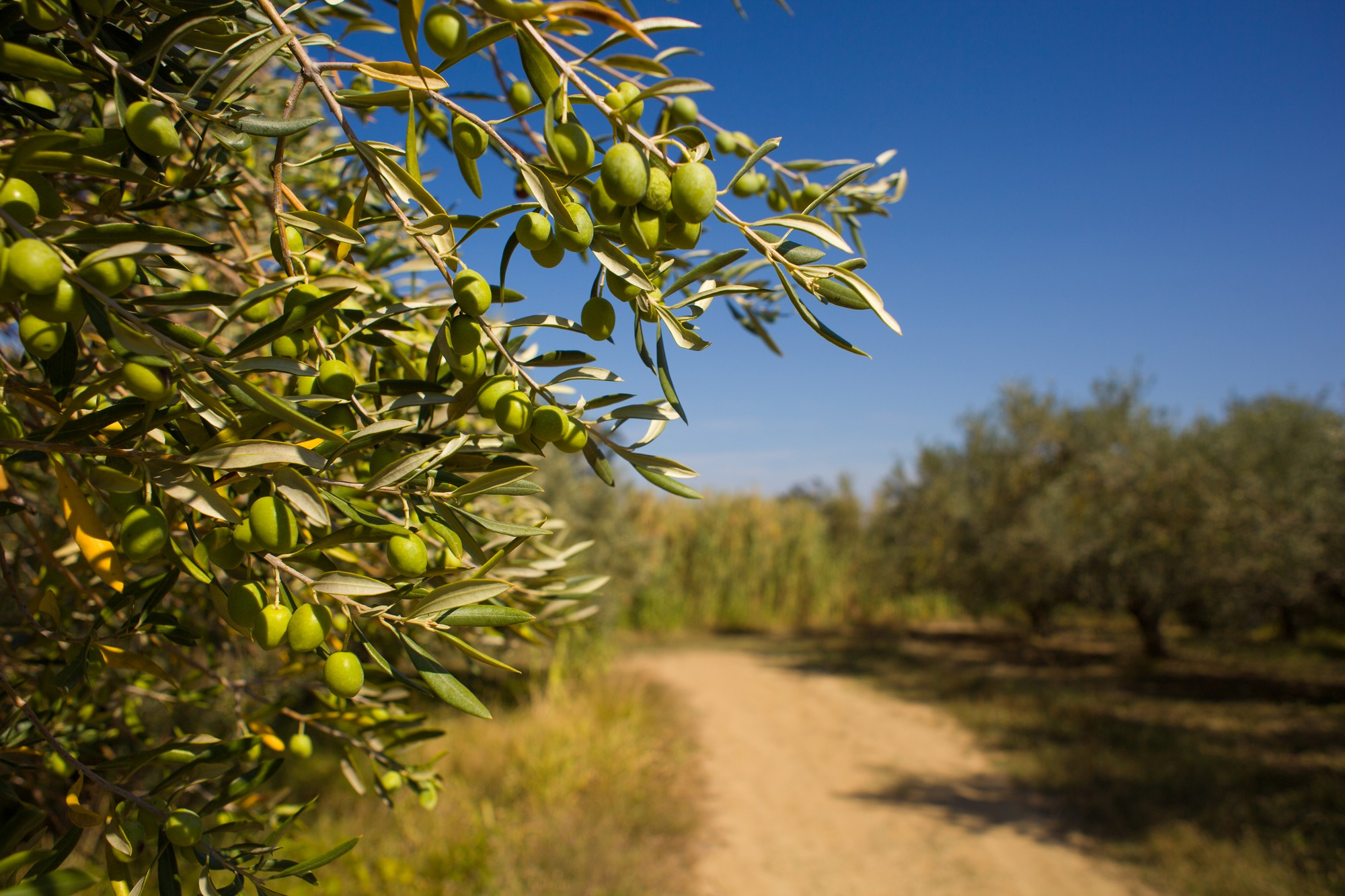The olive tree is an iconic tree of the Mediterranean Basin, with a history dating back millennia. Its cultivation has evolved since the Neolithic period, and it has been fundamental to the production of olive oil, a product of great cultural and economic importance. In Spain, the olive tree has seen significant development, particularly in Andalusia, which leads its production.
The country is home to more than 200 varieties, each with unique characteristics that contribute to the richness of its oils. This article offers a history of the tree so deeply rooted in culture and from which our Torrent olives and oils come.
ORIGIN AND HISTORY OF THE OLIVE TREE
The olive tree has a rich history spanning millennia, and it is an essential symbol of Mediterranean culture. Its journey has been marked by cultural exchange and its economic relevance across various civilizations.
The Emergence of the Olive Tree in the Mediterranean
The first traces of olive cultivation date back to the Neolithic period, between 3000 and 4000 BC. It is believed to have originated in the southeastern Mediterranean, in regions corresponding to present-day Syria and Palestine. In this context, ancient civilizations began to domesticate the olive tree, laying the foundation for its future expansion.
Olive Tree in Antiquity and Its Expansion
As cultures flourished, the olive tree was adopted by the Phoenicians and Greeks, who played a key role in its spread. During this time, the tree became an integral part of the economy and culture in the Mediterranean region.
Influencia de los Fenicios y GriegosPhoenician and Greek Influence
.The Phoenicians played a key role in spreading the olive tree along the Mediterranean coast, while the Greeks refined cultivation methods and began producing their oils. This cultural exchange facilitated the establishment of the olive tree as a main crop in various civilizations.
The Roman Era and the Olive Tree
With the arrival of the Roman Empire, the olive tree saw a resurgence. Through Romanization, cultivation and production techniques were standardized, making olive oil an essential commodity. A través de la romanización, se estandarizaron técnicas de cultivo y producción, permitiendo que el aceite se convirtiera en un bien esencial.
Consolidation in the Iberian Peninsula
The olive tree has a significant presence in the Iberian Peninsula, where its cultivation firmly took root due to Roman influence. Traces of olive groves have been found, indicating its dominance in the agricultural landscape of the time.
Olive Oil Trade and Transport
Remains of amphorae found in various parts of Europe suggest that the trade of olive oil extended along rivers such as the Rhône and the Rhine, positioning the product as one of the most valued in the Roman market.
Arab Resurgence and the Renaissance
Following the fall of the Roman Empire, olive cultivation saw a decline. However, during the Arab invasion between the 8th and 15th centuries, it was revitalized. The Arabs not only perfected cultivation techniques but also introduced new varieties, significantly increasing the extent of olive groves in the peninsula.
THE OLIVE TREE IN SPAIN TODAY
The olive tree continues to be a cornerstone of Spain’s economy and culture. The traditions linked to this ancient tree and its production are reflected in various regions of the country.
Economic and Cultural Importance
The olive tree represents an essential part of Spain’s cultural heritage and economy. Its cultivation provides vital employment, especially in rural areas. Olive oil, known as “liquid gold,” is a key product that drives both local and international economies, generating significant income through exports.
Culturally, the olive tree is deeply ingrained in Spanish gastronomy, traditions, and celebrations, symbolizing peace and prosperity. Its historical presence has been part of the identity of entire communities, serving as a unifying element across generations.
Regions with the Highest Production
Olive production in Spain is diverse, primarily concentrated in regions with favorable climatic conditions for its cultivation.
Andalusia, Leader in Production
Andalusia stands out as the leader in olive oil production, accounting for more than half of the area dedicated to this crop in Spain. Provinces such as Jaén, Córdoba, and Seville are globally recognized for the quality of their olive oils and table olives.
Other Notable Regions
While Andalusia is the heart of olive groves, other communities also make significant contributions to olive oil production. Among them, the following stand out:
- Castilla-La Mancha, known for its Cornicabra variety.
- Extremadura, where cultivation is on the rise.
- Catalonia, famous for its Arbequina, prized for its mild flavor.
These regions contribute to the diversity and richness of olive oil in Spain, each adding its unique qualities to the production process.
OLIVE TREE VARIETIES IN SPAIN
The olive tree varieties in Spain are diverse, each with unique characteristics that make them suitable for different climates and uses. This varietal richness contributes significantly to the production of high-quality olive oil.
Main Cultivated Varieties
Picual
The Picual variety is the most widely cultivated in Spain, especially in the province of Jaén. Its high oleic acid and polyphenol content provide great stability, resulting in an oil with a fruity and slightly bitter flavor.
Hojiblanca
The Hojiblanca variety predominates in Western Andalusia and is named after the whitish, almost silver, underside of its leaves. It is highly valued for its oil, which has a fruity and slightly peppery taste, as well as for its quality olives for direct consumption.
Manzanilla
Mainly cultivated in Seville and Huelva, the Manzanilla variety is prized both for olive oil production and table olives. Its fruits are known for their distinctive flavor and thin skin.
Gordal
A classic Andalusian olive, the Gordal variety is named for its large size. Scientifically known as Olea Europaea Regalis, this olive can weigh up to 12 grams. It has a fleshy pulp with low oil content and is mostly consumed as a table olive, often seasoned.
Arbequina
Originating in Catalonia, the Arbequina variety is known for its small size and the smooth, fruity oil it produces. This variety has gained popularity in other regions and internationally due to its adaptability.
Cornicabra
The Cornicabra variety, widely grown in Castilla-La Mancha, is known for its high resistance to adverse conditions. Its oil has a robust, fruity profile, making it highly appreciated in the culinary world.
Lechin
Found in Seville and Granada, the Lechín variety is valued for its adaptability to various soils and climates. The olives are used for oil production, recognized for their quality and distinctive taste.
Characteristics of Different Varieties
Each variety has its own unique qualities in terms of flavor, aroma, and resistance to pests. This diversity allows producers to experiment and offer a wide range of olive oils, from the mildest to the most intense. Different varieties are used both for oil production and for table olives, reflecting Spain’s agricultural and gastronomic wealth.









